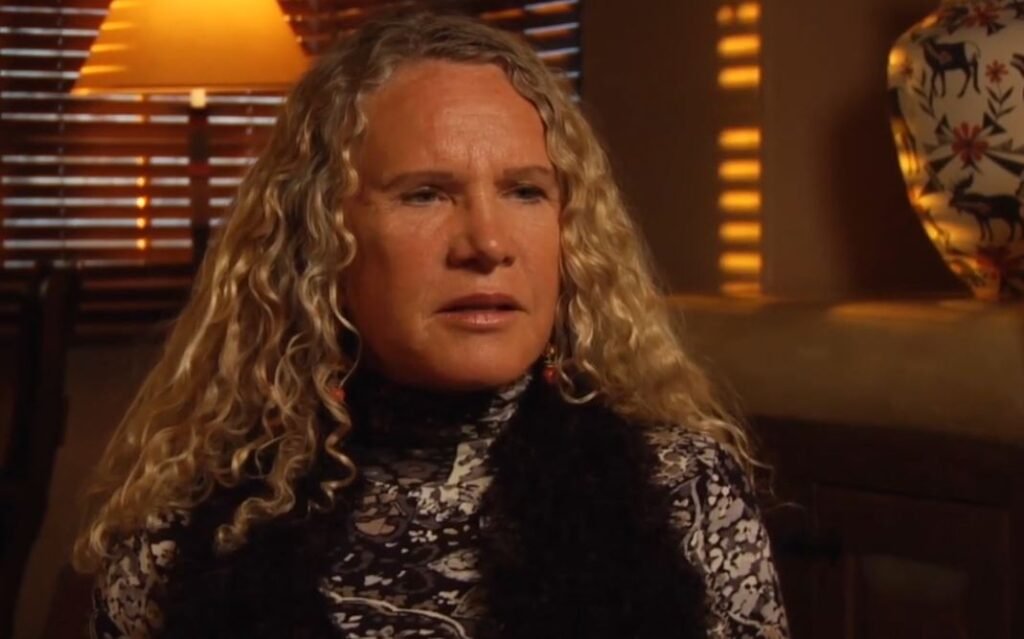
Although Christy Walton’s wealth was inherited rather than created, her influence is still growing in unexpectedly significant ways. After her husband, John T. Walton, died in an ultralight plane crash in 2005, Christy inherited a huge fortune that has made her one of the most quietly powerful people in the world today. A lot of billionaires try to attract attention, but Christy has chosen a very different route, one that blends responsibility and self-control and says a lot without shouting.
Her current estimated net worth is $19 billion, which is primarily derived from Walmart’s vast empire and is strategically diversified through her First Solar holdings. Her husband initially supported this solar energy endeavor, which has since grown into a particularly creative clean energy investment pillar. Christy has demonstrated a notably progressive approach by allocating resources to sustainable development, which stands in stark contrast to more conventional investment patterns observed across multigenerational wealth.
Simple WordPress-Compatible Table for Christy Walton
| Attribute | Detail |
|---|---|
| Full Name | Christy Ruth Walton |
| Date of Birth | February 8, 1949 |
| Age | 76 (as of 2025) |
| Birthplace | Jackson, Wyoming, USA |
| Net Worth | $19 billion (2025 estimate by Forbes) |
| Primary Wealth Source | Walmart shares, First Solar investment |
| Marital Status | Widowed (John T. Walton, died 2005) |
| Children | Lukas Walton |
| Residence | Jackson, Wyoming |
| Known For | Discreet philanthropy, environmental investments, Walmart heiress |
Even though her family’s name still dominates discussions about wealth and influence, she has steadfastly avoided the spotlight for the past 20 years. With more than 11,000 locations and two million employees worldwide, Walmart’s economic influence has made the Walton surname synonymous with contemporary retail. Christy’s story is particularly captivating, though, because of her understated presence.
It was discovered during the post-death financial reorganization that Christy had gotten about one-sixth of John Walton’s estate. About a third went to their son Lukas, who now manages a variety of charitable endeavors. Christy concentrated on creating a foundation of significant but subtle giving, while Lukas later became more involved in grantmaking and sustainable innovation.
She has made significant donations, especially to causes related to education, environmental conservation, and animal welfare. Giving her estate, a tranquil seven-acre property in San Diego, to Cross Border Philanthropy was one of her most notable charitable acts. Her enduring dedication to ecological responsibility and cultural preservation is demonstrated by her kind support of institutions such as the Mingei International Museum and the San Diego Natural History Museum.
She has subtly encouraged change by allocating funds to initiatives that advance equity and sustainability. According to reports, she donated more than $3.5 billion between 2002 and 2006, making her one of the wealthiest female philanthropists in terms of net worth. In spite of this, she famously refused to sign the Giving Pledge, a public pledge made by Warren Buffett and Bill Gates that many wealthy people have accepted.
Some saw her refusal to sign the pledge as controversial. Others, however, saw it as in line with her philosophy, which prioritizes action over spectacle. Christy’s decisions seem especially genuine in a time when impact is frequently overshadowed by public image.
She has significantly enhanced the understanding of how inherited wealth can change to accommodate contemporary societal demands by making wise choices. The genuineness of Christy’s influence has been enhanced by her relatively solitary lifestyle in Jackson, Wyoming, in contrast to other billionaire heirs who have pursued opulent or self-serving avenues.
She has covertly contributed to the transition to renewable infrastructure by utilizing alternative investments like solar energy—during a period when environmental policy discussions are still particularly pressing. She was at the nexus of long-term financial stewardship and burgeoning green capitalism because of her early alignment with First Solar.
Her vision for philanthropy has also permeated the media. Christy founded Tenaja Productions, a small film studio, in 2009 to support the adaptation of the moving Chicano coming-of-age book Bless Me, Ultima. When the movie finally came out in 2013, it was a unique instance of a billionaire supporting local, culturally significant storytelling. That choice alone demonstrated her willingness to work on projects that are frequently passed over by mainstream producers, especially those that elevate underrepresented voices.
Christy’s decisions have been thoughtful and incredibly successful in forming her larger legacy throughout her journey. Even though she might not make as much news as other titans of finance, her influence on how wealth is viewed in society is indisputable.
Christy’s strategy seems especially realistic in light of the growing calls for wealth redistribution and the increased scrutiny of billionaire behavior in recent years. She has served as an example of how vast fortunes can be used for purposes other than shareholder returns when they are managed with discretion and compassion. Her wealth has been used in remarkably humane ways, whether it is supporting independent film, conserving historic buildings, or financing biodiversity initiatives.
Christy Walton’s fortune is both inherited and purposefully managed, in contrast to tech moguls who base their wealth in digital ecosystems or celebrities who turn their fame into business endeavors. She has never attempted to imitate the ostentatious philanthropic branding model. Rather, her influence is demonstrated through family-led environmental innovation, carefully crafted grants, and preserved landmarks.
Through the Walton Family Foundation, her son Lukas carries on this tradition by funding public education, water conservation, and climate resilience. Despite receiving less media attention, their work is constantly in line with ideals that aim to solve long-term environmental issues rather than vanity metrics.
